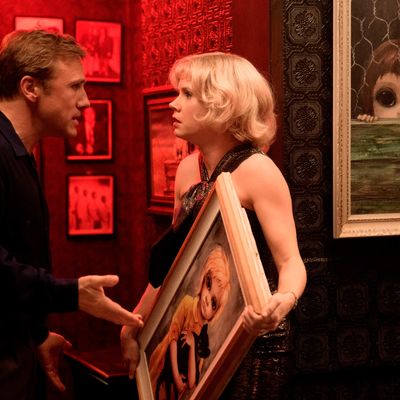
Nearly three decades ago, before he was a brand name, Tim Burton sat down with me to talk about, among other things, the peculiar combination of alienation and affection he felt for his childhood Burbank home, in which kitschy objects floated on otherwise barren walls and he developed an appreciation for “bad” art — provided, he said, that you could see someone’s strange mind at work. It was seven years before he’d make Ed Wood, but even then he hated when people referred to the visionary behind Plan 9 from Outer Space as the “worst director of all time,” and his subsequent biopic was an ironic celebration. He has now collaborated with Ed Wood screenwriters Scott Alexander and Larry Karaszewski on the more earnest but like-minded Big Eyes. It’s the story of Margaret Keane, the monstrously successful painter of round-eyed waifs, and the husband, Walter, who took all of the credit.
Amy Adams plays Margaret, the struggling divorcee who leaves a kitschy suburbia for San Francisco, where she meets Walter (Christoph Waltz) while selling her paintings in a park. She is damaged goods, and those soon-to-be-derided paintings reflect a deep reservoir of loneliness. Is Burton saying she was a great artist? I don’t think so. But she had a powerful, distinctive vision that was exploited by a near-sociopathic con-artist man and dismissed out of hand by elitists (among them Terence Stamp as a snooty critic). He’s saying the definition of kitsch is suspect.
Adams is lovely and tremulous, but Big Eyes would be even better if Waltz was in the same key. His performances in two Quentin Tarantino movies are sly and funny, but in more down-to-earth films his American accent is from nowhere, and he veers into cartoon territory. He’s so broad that Adams has to make Margaret stupider than she needs to be to be taken in by Walter. The last part of the film, though, is tingly fun — a suburban noir in which Margaret is trapped in her own world of big eyes, now catatonic with terror.


